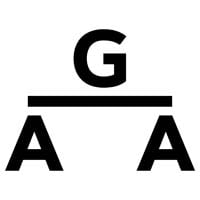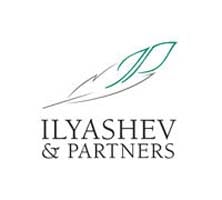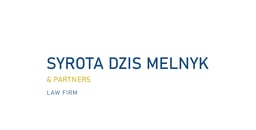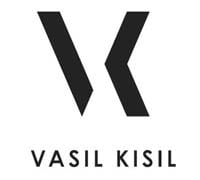
Ukraine


Aequo

AGA Partners

AMBER Law Company

Ario Law Firm
Armada

Arzinger

Asters

Avellum

Aver Lex

Baker McKenzie, Kyiv Office

CMS Ukraine

Dentons

EQUITY Law Firm

EVERLEGAL

GOLAW
Gracers

Gramatskiy&Partners

Hillmont Partners LLC

Ilyashev & Partners

INPRAXI LAW

Integrites

Jeantet

Kinstellar

KM Partners

Koziakov & Partners

LCF Law Group

Legal Strategy

MORIS
Nazar Kulchytskyy & Partners

PETERKA & PARTNERS LLC

Sayenko Kharenko

SDM Partners LLC

Vasil Kisil & Partners

VB PARTNERS

Wolf Theiss
News & Developments
ViewDispute Resolution: Arbitration
Interim measures in support of arbitration in Ukraine
When arbitration begins, the claimant often seeks interim measures to ensure that the respondent retains sufficient assets or is prevented from taking certain actions in order to satisfy a potential award and make its enforcement efficient. This article outlines key “good-to-know” points and practical considerations relating to interim measures in support of arbitration in Ukraine.
Availability of interim measures in support of arbitration
Since 2017, the Civil Procedural Code of Ukraine has allowed parties to arbitration proceedings to request interim measures from Ukrainian state courts. Granting interim measures is possible where failure to grant them may seriously hinder or even prevent enforcement of the award and the effective protection or restoration of the claimant’s infringed or disputed rights and interests.
Notably, in Ukraine, claimants can only request such measures once the arbitration proceedings have formally commenced. Along with the application for interim measures, a claimant must also submit:
a copy of the statement of claim or another document that initiates the arbitration proceeding in accordance with the applicable arbitration rules or the law of the seat of arbitration;
a document confirming the filing of that statement of claim or similar document in accordance with the applicable arbitration rules or law of the seat;
a copy of the relevant arbitration agreement or agreement to submit the dispute to arbitration.
As follows from the above requirements, particular attention is given to the arbitration rules or the law of the seat of arbitration. Consequently, Ukrainian courts in practice usually expect a claimant to provide relevant extracts from the arbitration rules or the applicable law to confirm proper filing of the claim.
In a case referred to international commercial arbitration outside of Ukraine, an application for interim measures shall be filed with the court of appeal at either the location of the respondent or its property, at the applicant's discretion.
Counter-interim security for respondent
Where interim measures are requested from a Ukrainian court, the court may require the claimant to provide counter-interim security to cover the respondent’s potential losses caused by the interim measures. The court is obliged to order counter-interim security, in particular, where the claimant (i) does not have a registered residence/place of stay in Ukraine and (ii) does not have sufficient assets in Ukraine. As a general rule, this means that the claimant must deposit cash in the court’s account in an amount set by the court. Importantly, in the event that the arbitral tribunal renders an award refusing the claim in full or in part, the respondent may seek compensation for losses (if any) caused by the interim measures from the claimant in full, even if they exceed the amount deposited as counter-interim security.
What interim measures may a claimant seek to obtain?
Ukrainian procedural law sets out a list of possible interim measures a court may apply. Among them, frequently sought measures include:
Seizure of property and/or monetary funds belonging to the respondent, or due to be transferred or paid to the respondent and held either by the respondent or by third parties;
Prohibition for the respondent to perform certain actions;
Prohibition for third parties to take actions in respect of the subject matter of the dispute, to make payments, transfer property to the respondent or perform other obligations in its favour;
Suspension of the sale of seized property where a claim has been filed for recognition of ownership of such property and for removal of the seizure;
Suspension of customs clearance of goods or items;
Seizure of a seagoing vessel to secure a maritime claim.
At the same time, Ukrainian courts are restricted from granting certain types of interim measures. Among other things, a court must not order measures that:
Interfere with or distort the public procurement procedures of state entities;
Impose seizure over the debtor’s property after bankruptcy proceedings have been launched against such debtor, except in cases expressly provided for by the Code of Ukraine on Bankruptcy Procedures;
Are granted in respect of perishable items;
Are essentially identical to satisfying the claim on the merits.
During the period of martial law, Ukrainian law temporarily prohibits interim measures where the respondent is a company that (i) operates critical infrastructure, (ii) had its shares/participation interests compulsorily alienated during martial law, and (iii) is more than 50% directly or indirectly state-owned.
How Ukrainian courts apply the proportionality test
The Supreme Court has clarified that, when considering a request for interim measures, the court must assess their proportionality. This involves balancing:
negative consequences that may result from granting the interim measures; against
potential negative consequences that may arise if the measures are not granted.
To this end, a court must take into account:
the right or legitimate interest the claimant seeks to protect;
the value of the property the claimant requests to seize;
the potential financial or legal consequences for the respondent if it is prohibited from performing certain actions.
In certain cases, it may be insufficient for a claimant to rely solely on a hypothetical risk that the respondent might evade enforcement of the arbitral award. For example, in Agrostudio Group Limited v Eco Energy Ukraine case the Supreme Court upheld the decision of the court of first instance, which took into account, inter alia, the following factors when assessing the application for interim measures in support of arbitration: (i) that the respondent’s share capital was significantly lower than the amount of the contractual penalties claimed; (ii) the nature of the respondent’s business, including the ongoing sale of maize and the uncertainty as to future harvest volumes and availability of maize by the time of enforcement; and (iii) indications that the respondent is disposing or taking preparatory steps to dispose of maize which, under the contract, was to be delivered to the claimant.
Accordingly, in most cases claimants are expected to back their application by invoking specific circumstances that may reasonably demonstrate the risk of impediment of the arbitral award enforcement.
Is it possible to enforce interim measures granted by an arbitral tribunal?
In arbitration, claimants often seek interim measures directly from an arbitral tribunal, such as a partial arbitral award or a provisional order. If the respondent refuses to comply voluntarily, the claimant attempts to enforce these measures through the state courts. While the relief framed as a partial award may be enforced through the ordinary procedure for recognition and enforcement, practical difficulties may arise with a provisional order because the applicant must demonstrate that it qualifies as an 'arbitral award' capable of recognition and enforcement.
Where interim measures are framed as an award (including certain interim/partial awards), recognition and enforcement may be sought under the general arbitral-award regime. However, the enforceability of awards granting interim measures remains uncertain and fact-dependent, as illustrated by Ukrainian case law. For example, in VEB.RF v Ukraine, the Ukrainian courts refused to recognise or enforce an SCC Emergency Arbitrator award on the grounds of public policy (contradiction to an existing court ruling).
Accordingly, where assets are located in Ukraine, a more predictable way is to seek interim measures directly from Ukrainian courts empowered to grant such relief in support of arbitration.
Koziakov & Partners - December 17 2025
Ukraine’s Anti-Dumping Enforcement in Wartime: Trade Defence Practice, Key Cases and Strategic Implications
Olena Omelchenko, Partner at Ilyashev & Partners, Head of International Trade Practice, PhD in Law
Anti-dumping investigations have become one of Ukraine’s key trade defence instruments, particularly since 2014 and following the full-scale war in 2022. Against the backdrop of disrupted supply chains and heightened economic security challenges, this mechanism provides effective protection for domestic industries against unfair competition and remains the primary practical tool for responding to such threats for Ukrainian manufacturers and international businesses operating in Ukraine.
Legal Framework
During the wartime period, no legislative amendments have been adopted, despite the fact that draft laws aimed at improving investigation procedures in line with international best practices have been pending in Parliament for several years.
As a result, the protection of Ukrainian producers against unfair dumping imports continues to be based on the Law of Ukraine “On Protection of the National Producer against Dumped Imports”, the WTO Agreement on Implementation of Article VI of GATT 1994 (the WTO Anti-Dumping Agreement), and the case law of the WTO Dispute Settlement Body.
Note: Ukraine is a WTO member and its anti-dumping procedures are in line with the WTO Anti-Dumping Agreement.
Key Authorities Involved
The key authorities remain the Ministry of Economy, Environment and Agriculture of Ukraine (the Ministry of Economy) and the Interdepartmental Commission on International Trade (the Commission or ICIT).
The composition of the Commission is approved by the Cabinet of Ministers of Ukraine and is currently represented at a higher decision-making level, including heads and deputy heads of key ministries, the State Customs Service of Ukraine, the Antimonopoly Committee of Ukraine, as well as, subject to consent, the Security Service of Ukraine and the Deputy Head of the Office of the President of Ukraine responsible for economic affairs.
Procedure
Initiation
The initiation of an anti-dumping investigation is preceded by a lengthy and often complex preparatory phase, which begins with a preliminary market assessment. Legal advisers analyse import structures, pricing behaviour, product characteristics, the condition of the domestic industry, and the economic indicators of potential applicants.
In cases where the number of producers is significant and they are not united within an industry association, the consolidation of producers itself may become the most time-consuming stage – in some instances taking longer than the collection of evidence or the drafting of the complaint.
Once the producers have reviewed the conclusions of the preliminary assessment, including the associated risks and prospects of the investigation, they decide whether to submit an application to the Ministry of Economy of Ukraine. The preparation of the complaint may take from several weeks to several months, depending on product complexity, the scope of required calculations, and the availability of economic data.
During wartime, the evidence-gathering process is further complicated by additional factors – such as the loss of documentation, changes in logistics, and production disruptions – making the role of legal and economic advisers even more critical.
Investigation
The complaint is submitted to the Ministry of Economy of Ukraine, which conducts an initial review and decides whether the application is sufficiently substantiated. Formally, the law provides that an investigation should be initiated within one month. However, during wartime this timeframe has effectively been extended: most cases are opened no earlier than three to six months, while some complaints may remain under review for more than a year.
The Ministry conducts a detailed examination of the submitted materials and frequently requests clarifications, additional documentation, or revised calculations from the applicant. Only where all elements indicating potential dumping and material injury are established does the Ministry submit a proposal to the Interdepartmental Commission on International Trade to initiate an investigation.
The Commission’s decision is published in Uriadovyi Kurier (the Government Gazette), after which all interested parties must register within 30 days and submit their evidence.
Formally, an investigation may last up to 12 months, with the possibility of extension to 18 months. However, in the realities of wartime such timeframes appear excessively long: Ukrainian producers require swift decisions, while a significant portion of the evidence may change or lose relevance in a rapidly evolving environment.
A core element of any anti-dumping investigation remains the demonstration of three mandatory criteria: the existence of dumping, material injury, and a causal link between them. Prior to 2022, the main challenges in establishing causation were largely associated with market fluctuations. Since the outbreak of the war, however, the situation has become fundamentally more complex. The focus has shifted to proving that numerous “other factors” – those unrelated to imports – do not distort the objective picture or neutralise the impact of dumping.
The destruction of production facilities, changes in logistics routes, a sharp decline in domestic demand, energy instability, and the relocation of enterprises all create a complex background that must be carefully separated from the actual impact of imports. The ability to correctly identify and isolate these factors has become a decisive element of the evidentiary standard in wartime investigations.
Against this backdrop, the requirements for both economic modelling and structural market analysis have significantly increased. As a result, the role of legal advisers has expanded well beyond traditional legal argumentation. It now encompasses market scenario modelling, logistics cost analysis, reconstruction of financial data, assessment of war-related factors, and their separation from dumping effects. Without such a comprehensive approach, the successful demonstration of injury in current conditions is virtually impossible.
Imposition of Duties
Ukrainian legislation formally allows for the application of provisional anti-dumping measures no earlier than 60 days from the initiation of an investigation. Such measures are imposed for four months and are intended to rapidly stabilise the market in cases of a significant surge in dumped imports. In practice, however, due to legislative shortcomings and the complexity of demonstrating imminent material injury, provisional measures are applied extremely rarely.
Definitive anti-dumping duties are generally imposed approximately 13 months after the initiation of an investigation. Recent practice, however, has shown that where a robust evidentiary record is available, cooperation with the Ministry of Economy is effective, and there are no procedural delays caused by foreign parties, the timeline may be reduced to nine to ten months.
Definitive duties are imposed for a period of five years and may be extended following a review if the risk of a resumption of dumped imports persists. In today’s volatile environment – characterised by unstable markets and rapidly shifting trade flows – review proceedings have become a critical tool for safeguarding competition and protecting Ukrainian producers.
Judicial Review of Decisions
Decisions may be challenged through court proceedings where procedural violations have occurred. Following the liquidation of the Kyiv District Administrative Court in 2022, all such cases were transferred to the Kyiv Regional Administrative Court, with subsequent redistribution to other regional administrative courts. This restructuring has significantly extended the duration of judicial review proceedings.
Impact of the War
Following the outbreak of the full-scale invasion of Ukraine by the Russian Federation in February 2022, the Ministry of Economy and the Interdepartmental Commission on International Trade were, for almost a year, largely unable to actively pursue anti-dumping investigations. Complaints submitted during this period were typically returned to applicants, while investigations initiated prior to the war were reviewed with significant delays, although they were ultimately concluded with the imposition of anti-dumping measures.
The first post-war decisions adopted by the Commission were initiated with the involvement of Ilyashev & Partners, which successfully secured the imposition of anti-dumping duties on silicon-manganese steel wire, coated carbon steel flat products, and glass containers.
Market Practice and Landmark Cases
The cases reviewed below illustrate how Ukrainian anti-dumping practice has evolved and which approaches define it today. They also reflect the role of Ilyashev & Partners, which over the past decade has been a recognised market leader in trade defence in Ukraine. Our team has initiated the largest number of successful anti-dumping investigations resulting in the imposition of measures and has established a series of key precedents – ranging from record anti-dumping duty rates to the first anti-circumvention proceedings in Ukraine’s history.
By combining legal, economic, and industry-specific expertise in a fully integrated manner, we consistently deliver successful outcomes in matters with a systemic impact on Ukrainian industry, shaping contemporary practice of the Interdepartmental Commission on International Trade and the Ministry of Economy of Ukraine.
Case 1 – Definitive Anti-Dumping Measures on Imports of Radiators from China and Turkey
One of the first truly landmark trade defence decisions adopted after the outbreak of the full-scale war and the effective relaunch of Ukraine’s anti-dumping enforcement mechanism was the decision of the Interdepartmental Commission on International Trade dated 16 April 2025, concerning imports into Ukraine of heating radiators originating from the Republic of Türkiye and the People’s Republic of China.
The Commission confirmed that radiator imports were carried out at dumped prices, causing material injury to Ukrainian producers, and imposed definitive anti-dumping duties, differentiated by country of origin:
Chinese producers – duty rates ranging from 34.59% to 74.26%, depending on the exporter;
Turkish producers – duty rates ranging from 14.22% to 22.93%, also reflecting individual dumping margins.
The level and differentiation of the duties reflect both the scale of the violation and the divergent market behaviour of individual exporters in Ukraine. For Ukrainian industry, this decision became a critical precedent: for the first time since the start of the war, a significant dumping threat was successfully established, and the state demonstrated its ability and readiness to respond effectively to external pressure undermining the competitiveness of domestic manufacturers.
This case has come to symbolise the revival of Ukraine’s trade defence practice in wartime and has clearly demonstrated the capacity of state authorities to move forward despite unprecedented external challenges.
Case 2 – Anti-Dumping Duties on Imports of Fittings from China and Turkey
Another key outcome of the wartime period was the completion of an anti-dumping investigation concerning imports of fittings for water supply and heating systems originating from the People’s Republic of China and the Republic of Türkiye. The decision of the Interdepartmental Commission on International Trade dated 7 July 2025 confirmed the systemic nature of dumping and the significant adverse impact of such imports on Ukrainian producers.
The investigation established substantial dumping margins, reflected in the definitive duty rates differentiated by country of origin and individual exporters:
People’s Republic of China (PRC) – general duty rates ranging from 87.84% to 166.65%, with certain exporters subject to individually calculated rates significantly exceeding average levels;
Republic of Türkiye – definitive duty rates ranging from 15.86% to 34.72%, depending on the manufacturer.
The exceptionally high rates imposed on imports from the PRC evidenced an abnormal level of price pressure and serious market distortions, while the investigation also identified a material, albeit less pronounced, dumping effect in relation to imports from Türkiye.
As a result of these measures, Ukraine succeeded in restoring competitive balance in the fittings market, stabilising prices, and preventing the further displacement of domestic producers by dumped imports. Notably, this case was successfully concluded despite the challenging wartime environment, in which the demonstration of injury and causation, as well as the collection of financial data, was significantly complicated by external factors.
Case 3 – Review and Extension of Anti-Dumping Measures on Cement and Clinker
In 2019, the International Trade Practice team of Ilyashev & Partners successfully protected the interests of Ukrainian cement producers in an anti-dumping investigation concerning imports into Ukraine of cement originating from the Russian Federation, the Republic of Belarus, and the Republic of Moldova.
At its meeting on 21 May 2019, the Interdepartmental Commission on International Trade (ICIT) decided to impose definitive anti-dumping duties for a five-year period on imports of cement into Ukraine, including cement clinker and Portland cement, classified under Ukrainian Customs Tariff (UKT ZED) codes 2523 10 00 00 and 2523 29 00 00.
The definitive anti-dumping duty rates were set as follows:
03% on imports of Portland cement and clinker originating from the Republic of Belarus;
46% on imports of Portland cement and clinker originating from the Republic of Moldova;
95% on imports of Portland cement and clinker originating from the Russian Federation.
The simultaneous imposition of such exceptionally high duty rates on imports from three countries represented an extremely rare outcome in anti-dumping practice and underscored the gravity of the dumping and injury established during the investigation.
In 2022, Ilyashev & Partners further defended the interests of Ukrainian cement producers before the Supreme Court of Ukraine, which brought to a close Case No. 640/11242/19 concerning the legality of the anti-dumping duties imposed by the ICIT in May 2019, thereby upholding the measures in full.
Subsequently, on 21 May 2025, the Interdepartmental Commission on International Trade adopted Decision No. AD-579/2025/441-01, extending the application of the definitive anti-dumping measures on cement imports from the Russian Federation, the Republic of Belarus, and the Republic of Moldova until 2030.
This decision has played a decisive role in restoring fair competition in the Ukrainian cement market, contributing to increased production and sales by domestic manufacturers, job creation, and the preservation and growth of long-term investment in the sector.
Cases 4-6 – Ukraine’s First Anti-Circumvention Investigations
One of the most precedent-setting developments in Ukraine’s trade defence practice in 2025 was the initiation of the first anti-circumvention investigations in the country’s history. In April 2025, the International Trade Practice team of Ilyashev & Partners initiated three separate proceedings aimed at countering the circumvention of anti-dumping measures imposed on products of Chinese origin.
The investigations concerned imports from Malaysia that were declared as Malaysian in origin but, based on factual indicators, were in fact products of Chinese origin. The cases covered the following product categories: steel fasteners, steel wire, and coated flat steel products.
These market segments are critically important for Ukraine’s metallurgy and machinery industries, making the identification and documentation of large-scale circumvention schemes strategically vital for preserving a fair competitive environment.
All three investigations were initiated on the basis of complaints prepared by Ilyashev & Partners on behalf of Ukrainian producers. The team conducted a comprehensive evidence-gathering exercise, including analysis of trade flows, identification of abrupt shifts in import geography, verification of Malaysia’s actual production capacities, and economic assessment of the likelihood of re-export of Chinese products under the guise of Malaysian origin.
This approach enabled the team to convincingly establish the existence of circumvention practices in relation to the anti-dumping measures applied by Ukraine to Chinese exporters.
Having reviewed the complaints, the Interdepartmental Commission on International Trade, for the first time in Ukrainian practice, extended the application of the anti-dumping duties imposed on goods originating from the PRC to imports from Malaysia as of the date of initiation of the investigations, rather than upon their conclusion.
As a result, Ukraine introduced – again for the first time – a mechanism of “preventive collection” during the investigation period, an instrument widely used in the European Union but not previously implemented in Ukrainian practice.
These cases represented a breakthrough in Ukraine’s approach to combating duty circumvention, as:
Article 27 of Ukraine’s Anti-Dumping Law was applied in a practical and effective manner for the first time;
a precedent was established for the use of advance deposits, an enforcement tool that may now be applied in other sectors;
Ukrainian producers received real and immediate protection against transit and misclassification schemes commonly used in international trade.
In effect, Ilyashev & Partners initiated a new stage in the development of Ukraine’s anti-dumping policy, aligned with contemporary challenges and the country’s EU integration trajectory. These investigations constitute the first comprehensive Ukrainian cases in which trade defence measures were applied not only against dumping itself, but also against organised circumvention schemes, bringing Ukrainian practice significantly closer to the approaches adopted in the EU and the United States.
Conclusion
Anti-dumping instruments have become an integral element of Ukraine’s economic strategy in wartime. Amid extreme market volatility, the destruction of logistics infrastructure, and aggressive pricing practices by foreign producers, anti-dumping procedures remain a key mechanism for preserving competition and ensuring the viability of strategically important industrial sectors.
The war has significantly complicated the demonstration of material injury and causal link, requiring both applicants and importers to work with broader, more fragmented datasets. Modern investigations demand a substantially higher level of analytical depth from legal advisers, including the reconstruction of financial indicators, market modelling, testing of logistics assumptions, and the separation of war-related factors from the impact of imports.
In this environment, firms representing the interests of both domestic producers and importers must be prepared for far more intensive evidentiary work, in which economic analysis and legal argumentation are inextricably linked.
Despite the extraordinary challenges, Ukraine’s trade defence system has demonstrated its institutional resilience: the Interdepartmental Commission on International Trade and the Ministry of Economy have continued to adopt decisions, initiate new investigations, and impose definitive measures. The emergence of the first anti-circumvention procedures confirms that Ukraine is capable of responding not only to traditional dumping practices, but also to increasingly sophisticated schemes designed to evade trade remedies.
The growing number of cross-border trade disputes and the deep interconnection of global markets are creating new opportunities for international cooperation. The complexity of contemporary cases – from the analysis of global supply chains to the assessment of circumvention risks – naturally opens the door to collaboration with foreign law firms, particularly in the context of global trade disputes and multi-jurisdictional proceedings.
In today’s Ukraine, anti-dumping is not merely a legal tool, but a pillar of economic resilience and strategic security. Its importance will continue to grow in the years ahead, as the effectiveness of trade defence investigations will play a decisive role in industrial recovery, investment development, and the protection of critical sectors of the national economy.
Ilyashev & Partners is a leading Ukrainian law firm in trade defence and anti-dumping law, widely recognised for its expertise in anti-dumping, anti-circumvention and international trade investigations in Ukraine. For more than a decade, the firm has been at the forefront of Ukraine’s trade remedies practice, advising domestic producers and international clients on complex anti-dumping proceedings, WTO-related matters, and cross-border trade disputes involving Ukraine.
The firm’s International Trade Practice provides comprehensive legal and economic support throughout the entire lifecycle of trade defence cases, including market and dumping assessments, preparation and filing of anti-dumping complaints, representation before the Ministry of Economy of Ukraine and the Interdepartmental Commission on International Trade (ICIT), judicial review before Ukrainian courts, and sunset and interim reviews. Ilyashev & Partners has initiated and successfully concluded the largest number of anti-dumping investigations in Ukraine, including record anti-dumping duty cases and the first anti-circumvention investigations in Ukraine’s history.
The team is particularly known for handling high-stakes trade defence matters in a wartime economy, combining legal analysis, economic modelling, and industry-specific expertise to address dumping, injury, causation, and circumvention risks in volatile markets. The firm regularly advises Ukrainian manufacturers, multinational corporations, investors, and international law firms on trade defence strategy, supply chain risks, import regulation, and compliance with Ukrainian, EU, and WTO trade rules.
With deep experience in cross-border trade disputes involving Ukraine, Ilyashev & Partners acts as trusted local counsel in Ukraine for international law firms in complex trade defence and WTO-related disputes.
To learn more about Ukraine’s leading anti-dumping and trade defence law firm, please visit the Ilyashev & Partners website or contact Olena Omelchenko directly.
Ilyashev & Partners - December 12 2025
Criminal Law
"Criminal Liability" of a Legal Entity without a Suspect: Key Business Risks
In its European integration agenda, Ukraine has set itself the ambitious goal of joining the "club of successful countries", which is the unofficial name of the Organisation for Economic Co-operation and Development (hereinafter referred to as the OECD), which brings together 38 of the world's most developed economies and is known for setting basic standards of public governance for states that uphold democratic values. In 2022, Ukraine initiated the process of integrating into the OECD and joining its Working Group on Bribery, a crucial step in this process. One of the necessary steps for joining the organisation is the ratification of the OECD Convention on Combating Bribery of Foreign Public Officials in International Business Transactions. Ukraine's accession to this anti-corruption convention is an integral part of the negotiations on EU accession, which involves aligning domestic regulations with the framework requirements of the partner countries' criminal legislation, among other things.
Criminal liability of legal entities in the context of new anti-corruption legislation
Traditionally, Ukrainian criminal law recognised only natural persons as subjects of crime. However, after ratifying several international treaties, the state undertook to harmonise national legislation with international standards, in particular regarding the prosecution of legal entities. Since 2013, the Criminal Code of Ukraine (hereinafter – the CC of Ukraine) has contained provisions on criminal law measures against legal entities, providing for the possibility of imposing fines, confiscating property, or liquidating a company in the event of certain crimes being committed by its authorised representative on behalf of and in the interests of such a company.
Law of Ukraine No. 4111-IX of 04.12.2024 supplemented Sections XIV-1 of the CC of Ukraine and VI of the Criminal Procedure Code of Ukraine (hereinafter referred to as the CPC of Ukraine) with the aim of implementing the OECD Convention on Combating Bribery of Foreign Public Officials in International Business Transactions. The law mentioned above introduces additional tools to combat corruption involving foreign officials. On the one hand, the implementation of the OECD Council's recommendations in this manner is a significant step forward for Ukraine; on the other hand, it poses risks to the business environment that are worth being aware of.
The new provisions potentially expand the scope of liability for legal entities, particularly by allowing for liability without the mandatory simultaneous criminal prosecution of individuals. It creates risks of abuse by pre-trial investigation authorities. Thus, the issue of balancing the effectiveness of anti-corruption control and guarantees of legal certainty for business becomes particularly relevant.
According to the version of the Criminal Code of Ukraine in force until December 2024, criminal law measures could only be applied to a legal entity if there was a fact of a criminal offence committed by an authorised person on its behalf and in its interests. The mandatory criteria in all cases were: 1) conviction of a natural person for one of the crimes provided for in paragraphs 1–6 of Part 1 of Article 96-3 of the Criminal Code of Ukraine; 2) proven connection of this crime with the activities of the legal entity.
Currently, the legislator has deviated from the traditional doctrine, which linked the application of criminal law measures to legal entities with the establishment of the guilt of a natural person. The current CPC of Ukraine has been supplemented by Chapter 37-1, which, along with the general procedure for bringing legal entities to justice, introduces a special procedure, the decisive basis for the application of which is the presence of signs of bribery of foreign officials. In accordance with the new provisions of this procedure, in particular Part 2 of Article 96-3 of the Criminal Code of Ukraine, for the first time, it is possible to apply criminal law measures solely on the basis of the fact of committing a socially dangerous act that falls under the signs of a crime provided for in Articles 209 (legalisation of income), 369 (offer/promise/provision of unlawful benefits), 369-2 (abuse of influence) of the Criminal Code of Ukraine, even without proving the guilt of a specific individual.
The law uses a broader term than criminal offence — "socially dangerous act that falls under the signs of an act provided for in Articles 209, 369, 369-2 of the Criminal Code of Ukraine ...", which allows law enforcement agencies not to prove in court the presence of all elements of a crime (in particular, the identification of a natural person). In our opinion, such a regulation contradicts the principle of presumption of innocence (Article 62 of the Constitution of Ukraine).
Moreover, the provisions of paragraph 6 of part 2 of Article 96-3 of the Criminal Code expressly stipulate that, to apply measures to a legal entity in the event of corruption involving foreign officials, it is not necessary to identify the specific person who committed the act. This construction contravenes the fundamental principles of criminal law, where liability is personal and punishment for an act is only possible if guilt is proven.
It is also worth noting the vagueness and excessive generality of the wording enshrined in both the previous and new provisions of Article 96-3 of the Criminal Code, according to which the basis for bringing a company to justice is the failure of an authorised person to fulfil their duties to take measures to prevent corruption. In the absence of proper regulatory and procedural consolidation of compliance mechanisms, the question arises as to what measures are being referred to. Without precise regulation of the scope, nature, and form of such "compliance control", business entities may be held liable even in cases where there is no direct link between the actions of an employee and the organisation. In addition, there is no mechanism for the official implementation or monitoring of compliance obligations through independent institutions. It opens the door to selective criminal prosecution and creates additional obstacles to economic activity.
In general, the provisions of Article 96-3 of the Criminal Code of Ukraine, as amended on 4 December 2024, provide an overly broad and vague basis for interpreting the grounds for applying criminal law measures to legal entities. It creates the potential for the unfair use of these measures in the struggle between business competitors. For example, a report to the law enforcement authorities that an authorised representative of a competitor has provided an unlawful benefit to a foreign official may be sufficient grounds for applying criminal law measures against a competing company.
Criminal proceedings under special procedure: grounds and risks
The grounds for criminal proceedings against legal entities under special procedure are rather ambiguous. According to Article 483-1 of the Criminal Procedure Code of Ukraine, criminal proceedings may be conducted under a special procedure (i.e., separately from proceedings against a natural person) on the basis of a prosecutor's decision or a court ruling. In this case, one of the following conditions must be met:
1) conducting proceedings separately against a legal entity cannot adversely affect the completeness of the pre-trial investigation and court proceedings against a natural person;
2) there is a final conviction, a decision to close criminal proceedings, or the application of medical or educational measures against an authorised representative of the company who acted on its behalf and/or in its interests;
3) the death of the suspect, accused or authorised representative of the company acting on its behalf and/or in its interests, in respect of whom sufficient evidence has been gathered to notify them of suspicion of committing a criminal offence, but who has not been notified of suspicion due to their death;
4) if the pre-trial investigation and/or court proceedings are impossible due to circumstances that effectively prevent the proceedings (in particular, the evasion of the suspect, accused or authorised person who acted on behalf of and/or in the interests of the legal entity from the investigation or court, serious illness of such a person, diplomatic immunity or special legal status of such a person, or refusal of a foreign state to extradite such a person, etc.), provided that this does not adversely affect the completeness and objectivity of the pre-trial investigation and court proceedings in relation to the natural person.
The wording is evaluative in nature, allowing for a broad scope of discretion on the part of the prosecutor. In other words, we see that the prosecutor is effectively allowed to assess, at their own discretion, whether or not the investigation of a natural person will be prejudiced by the conduct of separate criminal proceedings against a legal entity.
Due to the rare application of criminal law measures to legal entities by courts in the past, in particular due to the complexity of proving the connection between the actions of an authorised person and the interests of the company, it can be predicted that decisions on the possibility of conducting separate investigations against legal entities (without the need to establish and prove the guilt of a natural person) will now be popular among prosecutors.
The question arises as to the future practical application of such grounds for criminal proceedings under a special procedure, such as the existence of a decision to close criminal proceedings against an authorised representative of a company who acted on behalf of and/or in the interests of the company. Given the wording of paragraph 2 of part 2 of Article 483-1 and the provisions of paragraphs 1 and 2 of part 1 of Article 284 of the CPC of Ukraine, criminal proceedings against a legal entity are possible even after the closure of a case against an individual due to the absence of a criminal offence or the elements of a crime in their actions. This creates a certain conflict, which allows a legal entity to be held liable even in the absence of a proven crime on the part of a natural person, thereby increasing the risks of abuse and pressure on businesses.
In addition, the provision of paragraph 4 of part 2 of Article 483-1 of the CPC, which equates a person acting on behalf of a legal entity and "evading" the investigation with an accused or suspect, even without official status or a summons to the investigating authority, is controversial. This construction allows a legal entity to be held liable even in so-called "factual" cases.
Criminal law measures against legal entities in cases of bribery "with a foreign element"
Previously, in parallel with the criminal prosecution of a natural person, the following criminal law measures could be applied to a legal entity: fines, confiscation of property, and liquidation.
Currently, this list has been supplemented with additional (non-financial) criminal law measures that may be applied based on the results of criminal proceedings in a special procedure (without establishing the guilt of a natural person). Among the positive aspects, it is worth noting that liquidation and confiscation of a legal entity's property are not applicable in the above cases. Among the negative aspects is that the duration of the measures may vary from 6 months to 3 years, depending on the court's decision.
At the same time, Article 96-10-1 of the Criminal Code of Ukraine provides for a relatively long list of non-financial measures, which are divided into two groups: (1) temporary restrictions on the conduct of activities and (2) temporary restrictions on the acquisition of rights and benefits.
Although the new measures are labeled as "non-financial", their impact can result in significant financial losses and even lead to the shutdown of the business as a whole. For example, restrictions on the use of licences and special permits for the use of subsoil resources for up to 3 years can halt the operation of a business operating in a regulated sector and remove the company from a particular market.
Another problem is that the law of 4 December 2024 does not provide a mechanism for compensating legal entities that may suffer from the illegal or unjustified application of criminal law measures (e.g., in the form of restrictions on participation in tenders or advertising their activities). This creates an imbalance: if a company is unjustifiably held liable, it risks significant reputational, financial, and operational losses without any real possibility of obtaining compensation.
Gaps in the regulation of mechanisms for the procedural participation of a legal entity's representative and the resolution of procedural issues relating to the enforcement of court decisions
The provision of Article 483-7 of the CPC of Ukraine deserves special attention. It provides for the possibility of considering a motion for temporary restrictions on a legal entity without its participation. At first glance, this appears to be an exception that should only apply in cases where there is a real and proven threat, such as a change in constituent documents, liquidation of the company, or alienation of assets. The idea is clear - to prevent the loss or removal of property that may become evidence or the subject of a future judgment.
However, in practice, this rule opens up a highly vulnerable field to abuse. The investigating judge or court is given too much discretion. They can make decisions without representatives of the company itself, which effectively becomes a hostage to the process, without even having the opportunity to express their position. Moreover, there is an urgent need for legislative regulation of the supervisory authority's functional role in the implementation of court decisions regarding the application of criminal law measures to legal entities under a special procedure. For example, it is currently unclear how situations involving temporary restrictions on a legal entity's activities, such as prohibiting it from producing and distributing advertising about its own activities, participating in social dialogue bodies, or engaging in sponsorship, are regulated. Neither the Criminal Enforcement Code of Ukraine nor any other document currently contains provisions that clearly define the powers of such a body in the sphere of control over the implementation of the measures mentioned above, which creates a legal vacuum that needs to be filled urgently, since it became possible to bring a legal entity to justice under a special procedure more than six months ago.
Conclusions
Preventing double standards in criminal law is a key condition for effectively combating corruption. The asymmetry between the regulation of "export" and domestic corruption undermines legal certainty, creates room for abuse, and risks pressure on business. Bringing legal entities to justice without proving the guilt of specific individuals contradicts the principles of subjective guilt and individualisation of responsibility. An effective solution is to integrate mechanisms for the liability of legal entities into a unified criminal law system, supplemented by mandatory compliance programmes and internal controls, which will simultaneously strengthen the rule of law and preserve economic stability.
Author:
Igor Glushko, Partner at GOLAW, Head of Criminal Law and White Collar Defence practice, Attorney at law
GOLAW - November 17 2025
Corporate Law and M&A
TOP-10 QUESTIONS ON MERGER CONTROL IN UKRAINE
Which transactions require merger clearance?
If the transaction constitutes “concentration” under Ukrainian law, merger clearance may be required.
The definition of “concentration” includes different types of transactions:
(1) merger or acquisition;
(2) acquisition of control (direct or indirect);
(3) joint ventures.
However, not every concentration requires merger clearance. Only concentrations exceeding financial thresholds are notifiable.
What are the mandatory filing thresholds?
Concentration requires merger clearance if one of two alternative tests is triggered.
Test 1:
the combined global assets or turnover of all parties exceed EUR 30 million; and
the assets or turnover in Ukraine of each of at least two parties exceed EUR 4 million.
Test 2:
the assets or turnover in Ukraine of at least one party exceed EUR 8 million; and
the global turnover of at least one other party exceeds EUR 150 million.
All thresholds are calculated on a group-wide basis for the preceding financial year.
Which transactions are exempt from merger clearance?
The following transactions are excluded from the definition of “concentration” and are not notifiable:
within-group transactions, where control within the group is established in accordance with Ukrainian merger control rules;
creation of a joint venture that will not operate as an autonomous economic entity on a lasting basis (such a transaction is considered a “concerted practice”);
acquisition of shares by a financial or securities institution for resale within one year, provided it does not exercise voting rights in the governing bodies;
acquisition of control over an entity or its part by a bankruptcy trustee or state authority official;
acquisition of assets or shares by a financial institution under a restructuring plan, with resale within two years; and
acquisition of assets or shares by a bank through foreclosure on collateral, with resale within one year, provided it does not exercise voting rights in the governing bodies or use the assets.
Also, under martial law, an acquisition of control by a state-owned company (with 50% or more state participation – meaning that a private investor may hold up to 50%) or its controlled entities over energy or utility companies is not regarded as a “concentration”, provided that the acquisition aims to prevent or eliminate emergencies or disruptions in the supply of energy, heat, water, or gas.
How are foreign-to-foreign transactions treated under Ukrainian merger control rules?
Foreign-to-foreign transactions may trigger Ukrainian merger control filing requirements if the parties exceed the relevant financial thresholds.
Accordingly, even in the absence of sales, assets, or a local presence in Ukraine, notification may still be required.
However, under martial law and for 90 days thereafter, foreign-to-foreign transactions aimed at the development and implementation of technologies, as well as the manufacture of military and dual-use products in Ukraine that meet certain criteria, are exempt from the obligation to obtain merger clearance and may be carried out.
Which authority is responsible for issuing merger clearance in Ukraine?
The Antimonopoly Committee of Ukraine (AMC) is the primary state body responsible for protecting competition, reviewing transactions, and issuing merger clearance.
If the AMC prohibits a concentration, the Cabinet of Ministers of Ukraine may override its decision if the positive effects for the public interest outweigh the negative impact on competition.
When should parties submit notification?
The parties can submit a notification at any time, but they should obtain merger clearance before closing the transaction.
However, if the parties conduct concentration via competitive procedures (bidding, auctions, contests, tenders, etc.), they may submit the notification either before the procedure starts or within thirty days after the winner is announced.
What are the key procedural deadlines in Ukraine’s merger control review process?
Standard review
Preview period – up to 15 calendar days. The AMC checks whether the notification and accompanying documents comply with formal requirements.
Substantive review (Phase I) – up to 30 calendar days. The AMC assesses whether the concentration can be approved or whether there are grounds for prohibition%
if there are no grounds for prohibition and there are no restrictions under sanctions law, the AMC issues merger clearance within Phase I;
clearance is also deemed granted if, by the end of Phase I, the AMC has not initiated Phase II.
In-depth review (Phase II) – up to 3 months. Initiated if there are grounds for prohibition. The AMC conducts a comprehensive analysis of the transaction and its impact on competition, collects opinions of competitors, consumers, experts, and other relevant parties, and conducts surveys.
Total duration: up to 45 calendar days (preview and Phase I); up to 4,5 months with Phase II.
Fast-Track review
Combined preview and substantive review – up to 25 calendar days from filing.
Available if:
only one party carries out activities in Ukraine; or
combined share of the parties does not exceed 15 per cent on the relevant market, and 20 per cent on vertically related markets.
In practice, however, the AMC may still apply the standard procedure even if fast-track conditions are formally met. For example, where a party has not previously undergone review, the AMC may consider notification under standard review and require disclosure of the group’s formation history, including dates of acquisition and incorporation, as well as details of earlier transactions.
Under what conditions does the AMC approve a transaction?
The AMC approves a transaction (concentration) when it determines that the transaction does not result in monopolisation or a substantial restriction of competition in the relevant market.
If the AMC identifies potential adverse effects on competition, it may still approve the transaction provided that the parties propose remedies that eliminate those effects.
The AMC does not grant merger clearance if Ukrainian sanction legislation prohibits the transaction.
What financial penalties apply for failure to notify of a transaction?
Failure to notify of a transaction (concentration) may result in a fine of up to 5% of the group’s annual turnover for the last reporting year.
The actual amount of the fine may vary significantly depending on whether the violation leads to monopolisation or a substantial restriction of competition.
In addition, the AMC may consider aggravating or mitigating factors when determining the final amount of the fine.
For example, monopolisation or restriction of competition across more than two regions of Ukraine, or repeated violations, may be treated as aggravating factors.
Conversely, filing for clearance before the formal investigation begins, active cooperation with the AMC, and mitigation of adverse effects are considered mitigating factors that may reduce the fine.
What should parties take into account before filing?
Before submitting a merger filing to the AMC, the parties should carefully consider the following:
screen for Ukrainian sanctions – conduct a thorough check to confirm that none of the parties to the transaction (concentration), including their ultimate beneficial owners, are subject to Ukrainian sanctions;
assess activities in russia and belarus – verify whether any of the groups involved conduct business in russia and belarus. If so, collect information on their exit plans and timelines;
identify control relationships – prepare detailed information on all control links between entities, each entity’s corporate details and actual business activities;
define relevant markets and market shares – clearly define the relevant market and calculate the parties’ market shares. This is essential, particularly to assess eligibility for a fast-track review;
prepare required documents – ensure all documents are duly apostilled (legalised) and notarised, where applicable. These include powers of attorney for representatives, documents confirming ultimate beneficial owners (if any), evidence of funding availability, extracts from business registers, and any other documents required.
AUTHORS:
Oleksandr Melnyk, Partner at GOLAW, Head of Corporate and M&A practice, Attorney at law
Yevhenii Ahashkov, Senior Associate at Corporate and M&A practice at GOLAW
Yaroslav Maltsev, Paralegal at Corporate and M&A practice at GOLAW
GOLAW - November 17 2025


